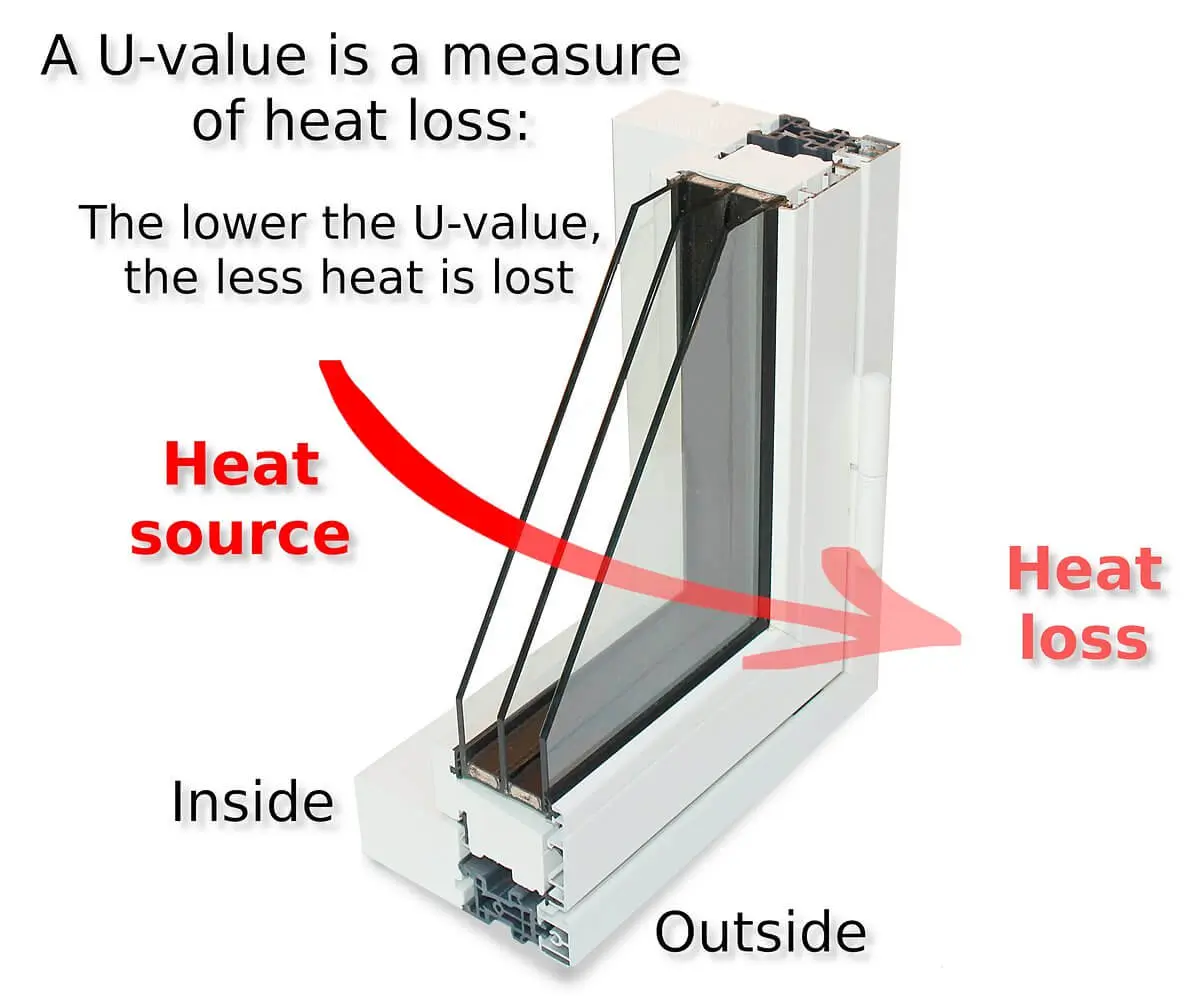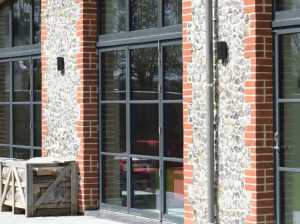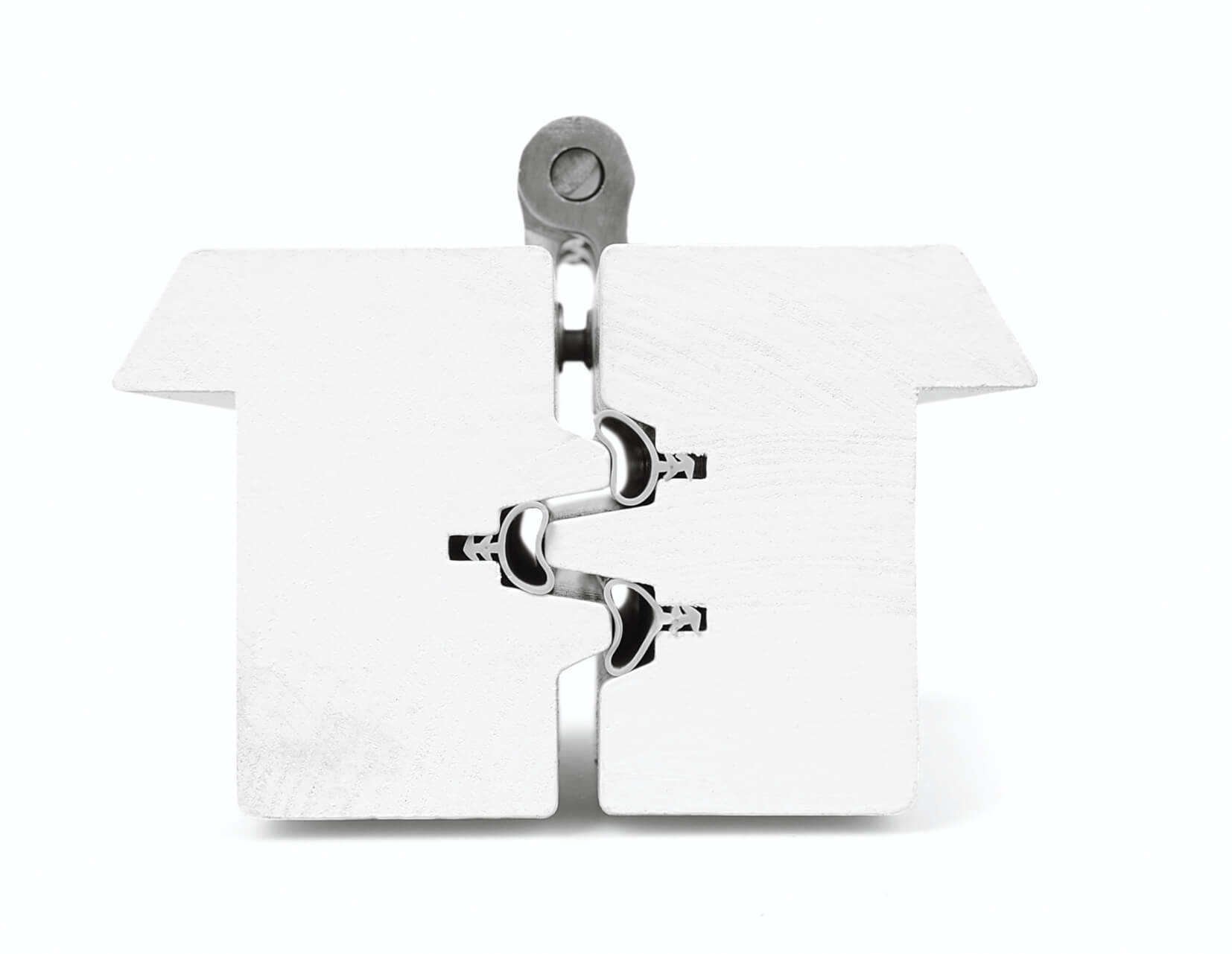Window and Glass Insulation Data Explained: U value, G Value, LT Value
Window performance data can be difficult to get your head around initially, especially when companies (we’re guilty of this too!) suddenly start talking about windows U values and G values when you ask about how good a product is at keeping your house warm.
New Regulations
To save you reading the whole article before reaching the part you really wanted to find out, here are the new regulations for a window U value as of June 2022:
- For renovations:
- When replacing windows, the Uw value of the new window must be 1.4 W/m2k or better (except, for timber windows, 1.6 is acceptable until June 2023)
- For newbuild homes:
- The “notional specification” Uw value for a window is 1.2 W/m2k. This means, combined with the notional values for other materials, your new home should pass the target primary energy and emission rates
- The absolute maximum Uw value of a window you’re allowed to put in is 1.6 W/m2k (but this is obviously not a great idea to get close to, because you’ll need to up-rate a lot of other materials to balance out the loss)
With all our orders, we receive a table of data from the factory with specific performance data for every window and door. We’ve displayed an example below – clearly, it’s not something that you instantly get to grips with. It is very important though, and a lot of our customers ask us how to interpret this data in a useful way. If nothing else, you will be able to compare your quotations properly – without having to resort to “best-possible” values displayed in most brochures or the BRFC energy rating letter, which won’t be available for most high-performance products.
Overall U Value
This is the one you may have heard of as a common comparison tool: this is a measure of heat loss from inside to outside. The smaller the number, the less heat lost through the window. The most useful value for comparing between products is the Uw value: this is the overall U value of a window as a whole. It’s not uncommon to see companies proudly displaying the Ug value (this is just for the glass) because that value normally looks better on paper…
For the overall Uw value, you’ll probably come across three different ways that this can be displayed:
The best way and most relevant to your project is when the manufacturer is able to work out the precise value of the exact windows you would be ordering.
The value is based on every individual part of the window: the insulation of the frame and the glass; the precise area and shape of the frame and the glass; and the spacer bar inside the glass.
This is calculated by a relatively simple formula:
Uw = ( Ug x Ag + Uf x Af + ψg x Lg ) ( Af + Ag ) Uf Frame U value Af Frame Area Ug Glass U Value Ag Glass Area Lg perimeter of glass ψg glass edge1 1 transmission through the glass spacer bar (used to separate the glass panes in a double or triple glazed unit).
Alternatively, according to UK Building Regulations, the Uw-value can be established to represent all the windows by using a standard window: 1.48 m high by 1.23 m wide, with a central vertical divider, one opening light and one fixed light. This obviously isn’t as accurate because it’s unlikely the window you order is going to match this description, but can be a useful comparison tool when looking at UK manufacturers.
It also creates a strange situation for products whose frame has a significantly worse Uf value compared to its glass Ug value. The smaller the window, the more frame area there is compared to glass area. So working out the Uw-value accurately for smaller windows would produce a much worse figure than this “standard window”. So, products that comply with Building Regulations using this standard definition might not comply if they chose to display the accurate value instead.
Finally, the best performance value: this is obviously least relevant to your project, but is often the most easy to find as it should be displayed in most product brochures. This value can be very useful as an initial comparison tool, but it’s worth noting that the windows you order may not get anywhere close to this value.
This is the most precise you can be, and particularly helpful when you have particularly large or small windows because the ratio of frame to glass can make a big difference. This is something other methods don’t take into account.
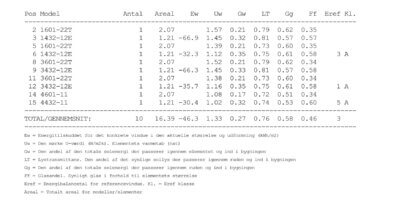 This is a selection of our Unik Funkis product u-values as shown on their u-value paperwork
This is a selection of our Unik Funkis product u-values as shown on their u-value paperworkOverall G Value
The G value is a measure of solar gain through the window: essentially, how much heat from the sun will the window let through. Similar to U values, please do be aware that the G value for the whole window will not be the same as the G value for just the glass.
This value goes between 0 and 1: where 0 would let no heat through at all, and 1 would let all of the sun’s heat hitting the window into the house.
It obviously will vary, but an argon-filled, low-e double glazed glass unit will have a G value around 0.73. Sometimes, this can be quite a lot. Especially if you have a large window on a South-facing elevation. To remedy this, plenty of solar glass options are available: a typical domestic-level of solar reduction can bring this down to around 0.36.
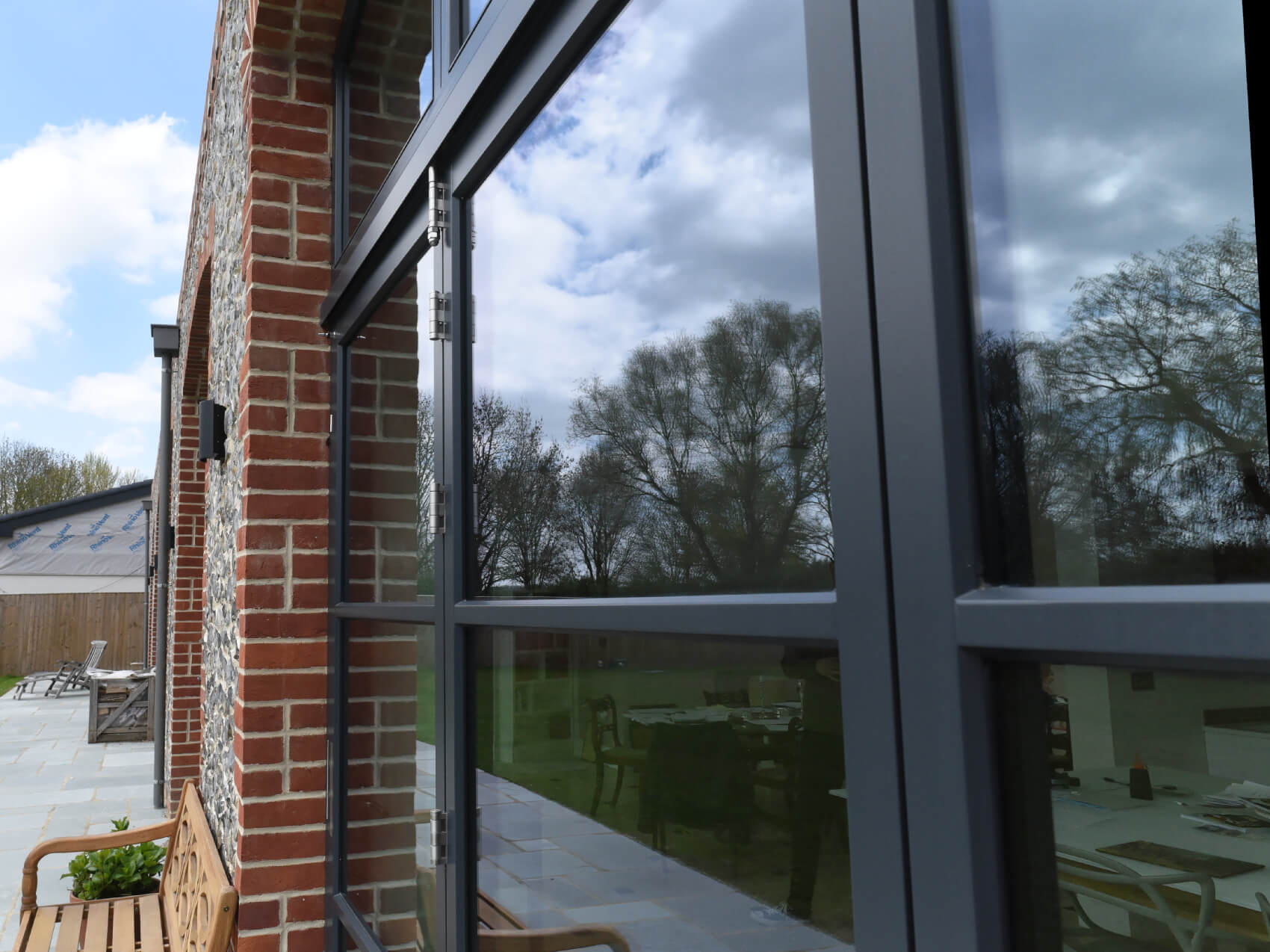
Image from our Coach House Conversion Gallery
LT Value
“LT” stands for Light Transmission – similar to the G value, this ranges between 0 and 1: the larger the number, the more light will be let through the glass.
The same double glazed, argon-filled glass example above would have a value around 0.8 and solar glass can vary quite a lot, depending on what you would like. Typical domestic options are 0.7 and 0.6 (and you will really notice the difference with 0.6…)
Airtightness Class
This is a measure of how much air can unintentionally flow through a closed window, and the air permeability class is determined by the amount of air pressure the product can withstand (both positive and negative pressure).
If your window has Class 0, then it hasn’t been tested. Class 4 goes up to 600pa of pressure, and this is currently the best possible. The higher the airtightness class, the less drafts there will be coming through your windows.
Sadly, it’s difficult for higher-performance systems to show off in this area… Some Danish products have been tested up to 2400pa: obviously, this is way above the Class 4 limit of 600pa and is actually on the level of a strong hurricane. But, since there aren’t any further testing classes above Class 4, it’s not immediately clear how good they are.
Airtightness is huge part of German and Danish window manufacturing – far more emphasis is placed in this department compared to UK-made product.
The philosophy is that windows should be as airtight as possible. Combining this with a mechanical heat recovery system, or even just trickle vents with regular venting and the start and end of every day, creates a completely controllable environment.
So you’ll struggle to find a high-quality Danish or German window that doesn’t have Class 4 airtightness. You may find the exception to this is a sliding door – these are inherently difficult to make airtight.
The Elephant in the Room
Why don’t a lot of products display a BFRC energy rating sticker? Surely this is the easiest way to compare everything?
I was once told by a Danish manufacturer who makes doors for Passivhaus builds (another article is needed for Passivhaus!) that there was no point in them providing a BFRC rating because they would be so far into the highest bracket that they would then be competing against lesser products. And I didn’t believe him. I thought he was giving me a “sales-y” answer as an excuse.
About a year later, I was working on the translation of a product brochure from Danish to English – part of this was going to be converting the Danish energy ratings into the UK equivalent brackets. Having spent longer than I should have done finding the two country’s different performance brackets and the formulas to get there (using all the values that we outlined in this article), I worked out that a C-rated UK-made plastic window would just about scrape into the E-rated bracket in Denmark.
So, then, I realised: the Danish person I spoke to the year before wasn’t joking – there really is no point in converting high-performance Danish windows into the UK measuring scale. They would end up above the top of the table.
Contact us!
For any questions about our products and services, or to get your quote,
please get in touch by phone, email, or using our in-browser contact form!
Leamington: 01926 935 607
London: 0203 633 0476
E-mail : sales@enlightenedwindows.co.uk
Contact Form: Contact Us




